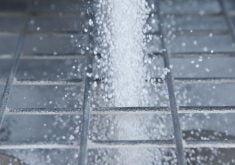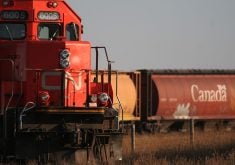A private, all-perils crop insurance company from Moose Jaw, Sask., is still in business and thriving after three growing seasons with some tough weather conditions.
“When we started out, AgriStability was our main business competitor, so you can understand that things are looking good for us going forward,” said Grant Kosior of Global Agrisk Solutions.
“If the federal government had done what they are doing to Agri-Stability (today) in a frost year like 2004, it would have been very bad for western ag.”
Kosior said in 2006 the government was straining against paying large numbers of claims when reference margins were $71 and farm sizes were smaller than today.
Read Also

House ag committee to undertake several studies
The House of Commons standing agriculture committee has set its agenda for the coming months. Members began the fall sitting with a two-hour update on international trade
“They’re $249 now and average (farm) acreage has doubled, so if there was a great big train wreck of a year you likely wouldn’t be getting paid out (through AgriStability).”
The independent insurance company initially had challenges finding reinsurance companies to back its policies.
However, the company was able to show it could deliver financial and production track records for clients over five year periods, which created confidence in the reinsurers. These are often the same companies that work with the provincial crop insurance programs.
“And now we have the opportunity to lower our premiums because we have established a claims record and shown that we are able to select the right clients,” said Kosior.
The company’s system insures actual fertilizer, seed and chemical costs, and allows for increases in fertilizer rates and unexpected chemical applications mid season to boost yields or protect against unplanned pests without a hike in premiums.
Additional coverage, up to another $100 per acre, is available to cover margins above inputs.
This means a 10,000 acre producer might be insured for $150 of inputs and maybe another $50 on top of that. It means there is $2 million of guaranteed minimum income coming into that farm.
Remaining involved with provincial crop insurance is also useful because it typically offers a wet spring benefit and many government supported ad hoc programs use it for delivery.
“For about the cost of hail insurance (about $8 per acre), we are auctioneer insurance. If it all goes wrong, our insurance keeps (the auctioneer) away,” he said.
Affinity and Conexus credit unions, Bank of Nova Scotia and Toronto Dominion Bank are lending against the Agrisk insurance.
















